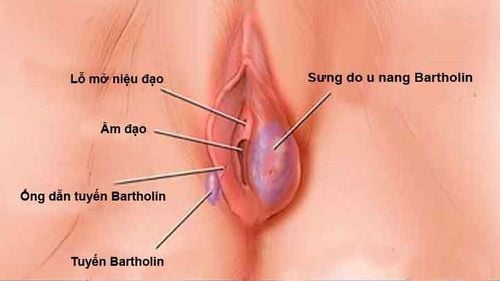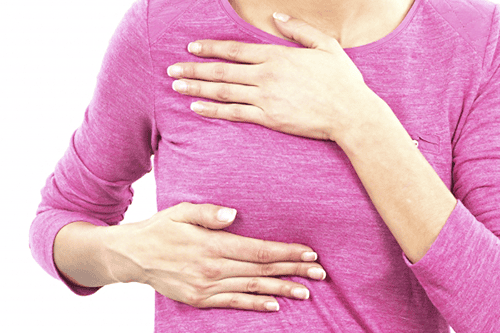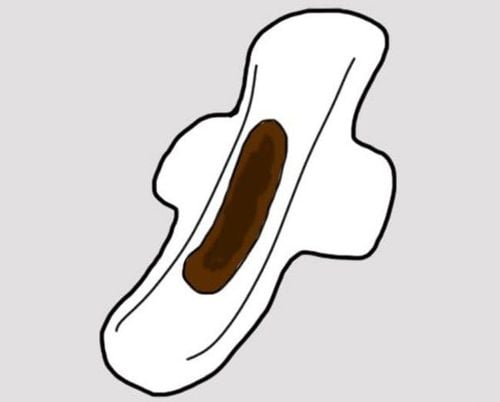This is an automatically translated article.
Breast abscess is a common disease in women, especially during the period when a woman has just given birth and is raising a child. Pathogenic bacteria can enter the mammary gland directly from the skin through the milk ducts or the sores in the nipple and areola area... or from another infection in the body through blood or sugar. lymph nodes to cause breast abscess.
1. What is a breast abscess?
Breast abscess is a localized collection of pus in the breast tissue, common in the postpartum period, in nursing mothers (2-3%). pus in the breast causes a lot of pain for the patient.
2. Classification of breast abscess
Primary breast abscess: including breast abscess during lactation and breast abscess outside lactation, common in young women, especially women with a habit of smoking. The disease is rarer in the elderly, people with chronic diseases (diabetes, chronic arthritis, immunocompromised). Secondary breast abscess: This disease often occurs after an infection under the skin of the nipple such as sebaceous gland inflammation, radiation therapy.
3. When are breastfeeding women most susceptible to breast abscess?
Lactating women are most susceptible to breast abscess in 2 stages as follows:
The first month of lactation: due to lack of experience and improper hygiene, the nipples of new mothers are very susceptible to infection. lesions, 85% of breast abscess cases of postpartum women occur during this time. Weaning stage, when the breast is full milk: after about 6 months, when the baby's baby teeth have grown, it will increase the risk of injury to the mother's nipple, causing nipple abscess.
4. Factors that contribute to breast abscess
Breast abscess can be seen in both men and women, this is a disease caused by bacteria, in which the most common are staphylococcus and streptococcus, less commonly pneumococcal, gonorrhea, typhoid bacillus, anaerobic bacteria... When resistance is reduced due to illness, lack of nutrients, staying up at night, hard work and little rest, due to stagnation of milk in the mammary glands (in women) are the main factors that cause breast abscess. The location of the breast abscess can be an anterior, intra-glandular, and post-glandular abscess and usually undergoes 2 stages: the inflammatory phase and the abscess formation phase, breast gangrene.
5. Signs to recognize breast abscess
Clinical signs of breast abscess depend on the location and stage of the abscess:
Inflammatory stage: breast abscess usually has a sudden onset with high fever, fatigue, headache, insomnia, pain deep in the mammary gland. , increased pain on examination, shoulder/arm movement. The inflamed breast is enlarged, dense, the ipsilateral axillary lymph node is enlarged and painful, the skin over the inflammation may be normal if the inflammation is deep in the gland, the skin may be hot/red/edematous if the inflammation is just under the skin or on the gland surface. Blood tests showed elevated white blood cell count, white blood cell count turned left, erythrocyte sedimentation rate increased. Abscess formation stage: localized pus pockets in the breast formed due to tissue necrosis, all symptoms are increased such as infection syndrome, intoxication: high fever, chills, dry lips, dirty tongue , headache, thirst, pallor, rapid emaciation, pain deep in the mammary gland, pain increases with shoulder/arm movement, while breastfeeding, breast enlargement, skin on breast abscess hot, tight, red or purple swelling. If the breast abscess is located deep, the skin may be normal, but the veins under the skin are prominent, showing lymphadenitis, nipple retraction. If the breast abscess is connected to the milk ducts, milk and pus can be seen flowing through the nipple and when the breast abscess is inserted correctly, pus can be aspirated.
6. Complications of breast abscess
Untreated or improperly treated breast abscess can cause complications:
Chronic fibrocystic mastitis, palpable solid infiltrates such as cartilage, rough surface, unclear boundary, no skin adhesion, less pain. Mastitis: This is the process of purulent mammary gland inflammation when pus-filled secretions are located between the layers of skin, subcutaneous loose tissue, connective tissue, mammary gland tissue and diffuse widely, penetrating the tissues. Manifested by the syndrome of infection, severe intoxication, the infiltrated area has no clear boundary, can lead to breast gangrene caused by highly virulent bacteria or gangrene bacilli. Infectious syndrome, severe intoxication: hypotension, breast enlargement, edema, skin on the abscess is pale yellow or necrotic, lymph nodes are painful. Breast abscess in the abscess stage needs to be distinguished from acute inflammatory breast cancer, cancer can occur in both breasts at the same time, the breast enlarges very quickly but without pain, the whole body collapses quickly, cytology by aspiration or biopsy for cancer cells.
7. Drainage of breast fluid to treat breast abscess
Drainage of breast fluid to treat breast abscess is indicated when the abscess has turned into pus, contraindicated when the red inflammatory mass has not turned into pus. Preparing to drain breast fluid to treat breast abscess:
Alcohol 70 degrees or Betadine antiseptic solution; 5ml syringe; Local anesthetics: Xylocaine 1% or surface spray anesthetic; Abscess injection kits; Sterile surgical linens; Examination table/operating table. The patient and family must be explained the reason for extracting the abscess and sign a consent form. The patient is examined by a general practitioner and specialist to assess the overall health. The patient takes off his shirt, lying on his back, straightening. The process of draining the breast abscess treatment includes the following steps:
Widely disinfect the abscess area from the inside out, using a sterile towel to wrap around the procedure area; Identify the breast abscess, find the softest skin location; Incision of the skin just above the abscess, the incision is like a diagonal spokes with the center of the nipple; After making an incision through the skin and subcutaneous tissue, go straight into the abscess to avoid injuring the surrounding tissues and causing bleeding, use small forceps or use the tip of your index finger to break the walls of the interconnected abscess to help pus drained out, leave the skin open and put 1 small gauze in the abscess to drain the pus out, withdraw after 12 hours. Patients are given painkillers, antibiotics orally or injected for 5-7 days, anti-edema drugs and monitored for bleeding at the incision. The adenocarcinoma requires anesthesia or local anesthesia, the incision is 7-10cm but must be 2-3cm from the nipple. To avoid breast abscess during breastfeeding, the mother needs to maintain good hygiene of the breast area before and after breastfeeding, breastfeed properly, and do not let the breast chew for a long time to avoid scratching and cracking the head. nipples, avoid stagnation of milk, clogged milk.
Breast abscess is a localized collection of pus in the breast tissue, common in the postpartum period, in nursing mothers. Breast abscess if untreated or improperly treated can cause chronic fibrocystic mastitis, due to prolonged antibiotic use in the abscess stage or as a result of direct injection of antibiotics into the mammary gland. for the treatment of breast abscesses; Breast gangrene is caused by highly virulent bacteria or by gangrene bacilli. Accordingly, the drainage and treatment of breast abscess should be performed properly by medical staff to avoid complications and health risks.
Vinmec International General Hospital is a high-quality medical care address with a team of doctors, experts, and medical staff with many years of experience and expertise. The system of modern machinery and equipment meets high standards. Therefore, when having health problems, patients need to go to medical facilities for examination and timely intervention.
Please dial HOTLINE for more information or register for an appointment HERE. Download MyVinmec app to make appointments faster and to manage your bookings easily.













